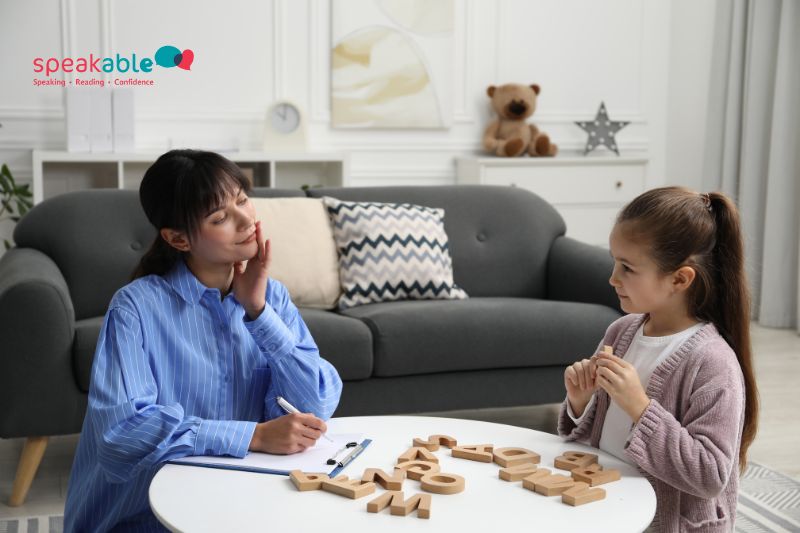Understanding the Spectrum of Speech Disorders
Published: 07 Mar 2025 Tagged:
 Understanding the Spectrum of Speech Disorders
Understanding the Spectrum of Speech Disorders
Understanding the Spectrum of Speech Disorders
My child speaks incorrectly — is this normal? When should I seek help?
These are common questions from parents who notice some communication difficulties in their children. Speech and language develop at different rates, but certain signs may indicate the need for an evaluation by a speech-language pathologist. In this blog, we’ll explain the main types of speech disorders, how they are diagnosed, and how virtual therapy can help.
What are Speech Disorders?
Speech disorders are conditions that make it difficult for a person to produce speech sounds correctly, fluently, or with the right voice quality. They can affect children, adults, and seniors, directly impacting communication and self-confidence.
Common Types of Speech Disorders
- Articulation Disorders: Difficulty forming specific sounds, often sounding like prolonged baby talk (e.g., saying "wabbit" instead of "rabbit").
- Fluency Disorders: Problems with the flow of speech, such as stuttering — excessive repetitions and pauses.
- Resonance Disorders: Changes in airflow, causing speech to sound overly nasal or muffled.
- Voice Disorders: Issues with pitch, volume, or voice quality — like persistent hoarseness.
- Apraxia of Speech: Difficulty planning the movements needed for speech, even though the muscles work normally.
- Dysarthria: Muscle weakness affecting speech, often linked to strokes or neurological conditions.
- Language Disorders: Difficulty understanding and forming sentences — this is more about language processing than simply "speaking wrong."
Common Signs Parents Should Watch For
Knowing what’s typical and what might be a cause for concern is key. Here are some common red flags parents should be aware of:
- Limited babbling or talking by age 2.
- Speech that’s hard to understand after age 3.
- Frequent stuttering that persists beyond age 4 or 5.
- A voice that sounds consistently hoarse or overly nasal.
- Difficulty following basic instructions appropriate for their age.
Diagnosing Speech Disorders
Diagnosing speech disorders is a collaborative process that involves speech-language pathologists, parents, and educators. It typically includes:
- Parental interviews to gather developmental history.
- Observations of the child’s spontaneous speech.
- Age-appropriate speech and language tests.
- Oral motor assessments to check tongue, lips, and breath control.
- Input from teachers or caregivers if needed.

How Virtual Speech Therapy Helps
Virtual speech therapy offers effective support directly from home, making it more convenient for families. It bridges the gap between professional help and everyday routines, ensuring children receive consistent care without needing to leave their familiar environment.
Flexible scheduling to fit family routines.
Interactive tools like games and visual aids to engage children.
Immediate feedback from therapists to guide corrections.
Parents can actively participate, learning strategies to reinforce progress at home.

Final Message
If you’re concerned about your child’s speech development, seeking help early can make a big difference. Every child develops at their own pace, but the right support can unlock a future of confident communication.





Because you can.
Suite 10, L2 79-85 Oxford St
Bondi Junction
Mon-Fri 8am-6pm
Sat 9am-4pm